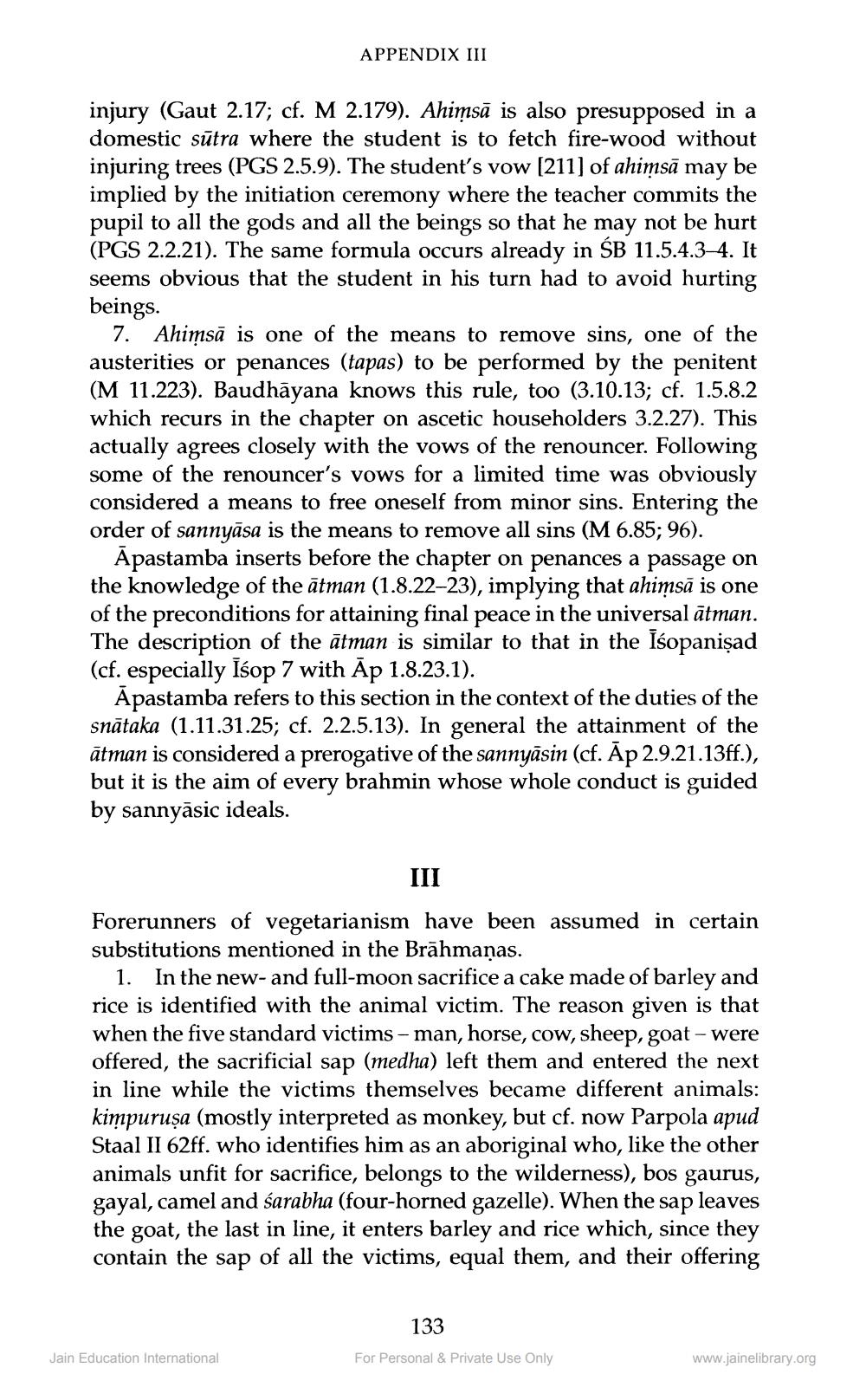________________
APPENDIX III
injury (Gaut 2.17; cf. M 2.179). Ahimsā is also presupposed in a domestic sūtra where the student is to fetch fire-wood without injuring trees (PGS 2.5.9). The student's vow (211) of ahimsā may be implied by the initiation ceremony where the teacher commits the pupil to all the gods and all the beings so that he may not be hurt (PGS 2.2.21). The same formula occurs already in ŚB 11.5.4.3-4. It seems obvious that the student in his turn had to avoid hurting beings.
7. Ahiņsā is one of the means to remove sins, one of the austerities or penances (tapas) to be performed by the penitent (M 11.223). Baudhāyana knows this rule, too (3.10.13; cf. 1.5.8.2 which recurs in the chapter on ascetic householders 3.2.27). This actually agrees closely with the vows of the renouncer. Following some of the renouncer's vows for a limited time was obviously considered a means to free oneself from minor sins. Entering the order of sannyāsa is the means to remove all sins (M 6.85; 96).
Apastamba inserts before the chapter on penances a passage on the knowledge of the ātman (1.8.22-23), implying that ahimsā is one of the preconditions for attaining final peace in the universal ātman. The description of the ātman is similar to that in the Isopanișad (cf. especially Isop 7 with Āp 1.8.23.1).
Apastamba refers to this section in the context of the duties of the snātaka (1.11.31.25; cf. 2.2.5.13). In general the attainment of the ātman is considered a prerogative of the sannyāsin (cf. Āp 2.9.21.13ff.), but it is the aim of every brahmin whose whole conduct is guided by sannyāsic ideals.
III
Forerunners of vegetarianism have been assumed in certain substitutions mentioned in the Brāhmaṇas.
1. In the new-and full-moon sacrifice a cake made of barley and rice is identified with the animal victim. The reason given is that when the five standard victims – man, horse, cow, sheep, goat - were offered, the sacrificial sap (medha) left them and entered the next in line while the victims themselves became different animals: kimpuruşa (mostly interpreted as monkey, but cf. now Parpola apud Staal II 62ff. who identifies him as an aboriginal who, like the other animals unfit for sacrifice, belongs to the wilderness), bos gaurus, gayal, camel and sarabha (four-horned gazelle). When the sap leaves the goat, the last in line, it enters barley and rice which, since they contain the sap of all the victims, equal them, and their offering
133
Jain Education International
For Personal & Private Use Only
www.jainelibrary.org




